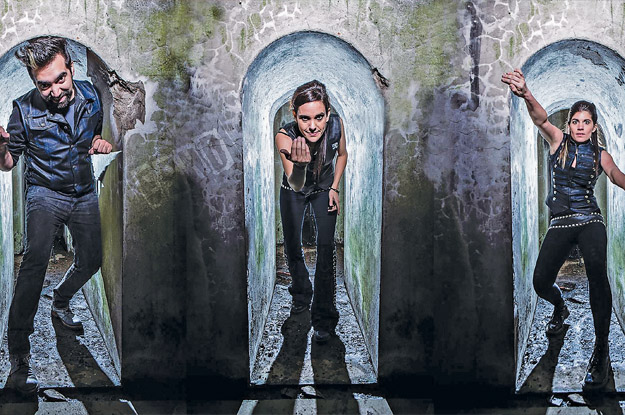This article is adapted from AQ’s print issue on transparency and the 2018 elections
The power trio (guitar/bass/drums), pioneered by Cream and The Jimi Hendrix Experience in the late 1960s, has been around in Latin America for at least four decades. Bands such as Manal and Pappo’s Blues in the 1970s, Soda Stereo and Os Paralamas do Sucesso in the 1980s, and Divididos in the 1990s have given the rock ’n’ roll lineup uninterrupted pride of place on the region’s stages and musical charts.
Eruca Sativa, a young power trio from Córdoba, Argentina, follows in this rich regional heritage. With their latest album, the Latin Grammy-nominated Barro y fauna, they’ve proven themselves worthy of the task.
Comprised of Lula Bertoldi, Brenda Martín and Gabriel Pedernera, Eruca Sativa has made its mark over the past 10 years with an unrelenting sound, gripping video productions and star-making live shows at Buenos Aires’ Luna Park, the Mecca of Argentine rock.
Barro y fauna (Mud and fauna) highlights three pillars of the band’s current creative process: amps that go to 11 (for a technical explanation, see This Is Spinal Tap), innovative recording methods, and overflowing imagination.
Over 14 songs, the group’s signature intensity can startle and surprise, as when the return of a powerful chorus interrupts the acoustic guitar fade-out in “Armas Gemelas,” or when a fretless bass solo on “Sin la Red” is contradicted by the asymmetric riff that undergirds the following track, “Tarará.” These sudden shifts urge listeners to follow Barro y fauna alertly, lest they miss a revelatory turn.
Eruca Sativa is steadily committed to the riff as their musical building block. These short, repeated melodic fragments appear time and again in the band’s music, so much so that Bertoldi promised fans “high volume, sweat-drenched T-shirts, and an overabundance of riffs” for an upcoming show.
This trademark style is of course present in Barro y fauna. The album was produced by Ariel Sosa, a close collaborator of Gustavo Santaolalla, the Los Angeles-based Argentine icon of 1970s hippie rock who now plies his trade as an Oscar-winning composer. Santaolalla also contributed ronroco (a traditional guitar from the Argentine and Bolivian highlands) and vocals to the folk-oriented track, “Somos Polvo,” which builds intensity over a mysterious, vaguely ominous electronic loop.
The band developed Barro y fauna using the latest digital tools, allowing them to collaborate remotely and spend less time hashing out compositions in a studio. This contributed to a raw compositional feel that lends itself to Eruca Sativa’s unprocessed style. The band has said in interviews that this new mode of collaboration also meshed well with their personal lives, especially since both female members became mothers at the beginning of the recording process.
At some point, every up-and-coming band is asked about influences or musical preferences, perhaps to create a type of musical genealogy that will help audiences place them. Eruca Sativa has opened for Aerosmith and Foo Fighters, and professes admiration for international artists such as St. Vincent and Argentine funk and crossover acts. Musically and poetically, however, they are far more unsentimental than any of these; their hermetic lyrics do not shun social critique, and their playing style, self-described as brutal and primitive, makes anything they do feel extremely intense. These qualities, which shine through in this album’s refreshing contrasts, suggest the power trio mantle is in good hands.
—
Zubieta is director of the music program at Americas Society. Russell is a senior editor at Americas Quarterly.



